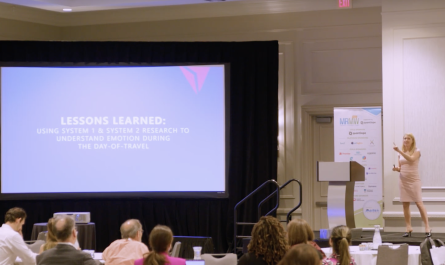What makes successful companies with 100 years of history adjust their business model and become more consumer-centric?
Today, more and more companies realize the need for consumer centricity. Exclusive access to distribution channels and superior products no longer provide a competitive advantage. This is especially painful for mid-sized firms. On one side they face the rise of indie brands with direct-to-consumer models. And on the other side – they have to compete with large corporations that joined the fight for the niche segments with their line extensions and acquisitions. But despite the urgency, not many mid-sized companies manage to implement structural and cultural changes to stay competitive.
We decided to focus on one particular case: Weleda. A world-leading natural cosmetics and pharmaceuticals brand, a business model that has worked for decades. Why after so many years the company has decided to become more consumer-centric and introduce the Consumer Insights function (CI)? Has the desired transformation happened? We talked to 2 key people that were at the core of the turnaround at that time: An Driessens, Chief Marketing Officer, and Jacek Margol, the newly appointed head of CI at Weleda.
1. The turning point is when you realize the urgency of the situation: “What worked for Weleda in the last 100 years, won’t carry us for another 100 without changing some fundamental things”.
The company has always had unique products and demonstrated distinctive values. But this no longer provides a competitive advantage. Today, you need to follow the evolving needs of the consumer; and do that faster than competition.
For Weleda, consumer centricity is not only about survival but is also a great opportunity. Consumers are becoming more ingredient-conscious and demanding and Weleda has all the fundamentals to meet their needs. “The time has never been riper for a company like Weleda as it is now, but in order to capitalize on that, we needed to change a few things. And the biggest thing we needed to change is to get away from this inside-out thinking to an outside-in thinking.”
2. It becomes fairly easy to justify the need in CI, once you show the amount of opportunities the company is missing. Most people at Weleda didn’t work with the consumer insights function previously. “Usually CI is perceived as an extra investment. And asking for investment is never easy if you don’t yet have any tangible results yet” – as An stepped into the CMO role, she ran holistic diagnostics – a series of stakeholder interviews, internally and externally – that showed serious flaws in the current model:
- Lack of consumer understanding created knowledge gaps that prevented Weleda from strategy implementation. “You cannot plan if you don’t know your consumer, where the category is moving and what the drivers are”.
- Too much focus on the product in the past several years created an unhealthy pipeline that was sometimes too late and sometimes too early vs. consumer needs. “…failures that the company had in the previous years could have been avoided if we had consumer understanding”.
- Credibility with retail customers was at risk: “We kept talking about the same kind of natural deep green consumers as we did 10-20 years ago, but the market has moved on considerably and our customers knew that”
3. Less is more: the main difference of the mid-size company CI vs the large company is the focus on the return on investment (ROI), not the size of the function. When stepping into the CI leader role, Jacek made his own calculations: “if I benchmark vs Procter & Gamble, for its size Weleda should have 10 times more consumer insight managers and budget that it has today”. But staying competitive today is not about the quantity or size. Research doesn’t cost less for a smaller company and it’s critical to ensure that CI investments pay-off disproportionately. Jacek established several principles that would help to grow the ROI of his function:
- Focus only on highest risk & reward areas: biggest launches, biggest markets, killer questions only. The rest could be delegated to other functions or country teams. “We cannot afford that CI does all the research. And it’s not needed. But if anybody wants to engage in running a study – they are obliged to comply with certain quality standards”.
- Drive better output. CI job goes beyond results delivery: we also need to follow through the learning activation and get the most value out of existing studies. “In the past, there was a huge landscape analysis done but nobody did anything with it” – Weleda cannot afford this waste, all learnings need to be activated.
- Leverage your network as an extension of your team. “Compared to P&G I double my effort into networking with people in CI in other companies, reading those reports and going to conferences.” Capability building and research innovation is an additional project that CI leaders in a mid-size company should be adding on top of their day-to-day work. You need to stay connected and externally-focused to keep up with the latest best practices, techniques.
- Democratize the market research work and data ownership. Other functions or business units can also own data or run certain learning activities where the level of risk is minimal. “CI is not about the data, it’s about the WHY behind the data; it’s the center of excellence of any learning that the company is generating”.
- But data democratization should come with certain rules. Jacek developed several principles for the organization. For example, any party can engage in market research but they should comply with certain standards of excellence and all studies should be validated by CI centrally. These principles got management support which helped to drive alignment across the organization.
4. Becoming consumer-centric is a cultural shift. You need to be enabled with the right team and business partners to drive that.
- A lot depends on the qualities of people who will bring consumer voice into the organization. When building the team, Jacek was looking for passionate people who would drive the change. And it is not always about the mastery: “It was not the specific deep-dive experience in CI I was looking for: rather I wanted more the right attitude”. You can get technical expertise from the suppliers and through coaching & training. But the drive, natural curiosity and desire to drive change is something you cannot teach.
- CI helps the company to slow down in order to speed up. It takes time to align everyone, but once all the functions have the same view of the consumer and brand positioning, the company can move much faster. And the job of the CI is to drive this alignment. “Once you know what you stand for you can go out and communicate to consumers and customers”.
- The role of having externally-focused commercial business partners is critical. CI change was not the only one, it came together with few other key players stepping in and driving brand development capability programs across the commercial organization and executive team.
YOU MIGHT ALSO LIKE: A New Era of Business or Just a Different Value Proposition?
So has Weleda become a consumer-centric company?
Realistically this is as far as they could go in a short period of time. We cannot say whether consumer centricity became a competitive advantage of Weleda, but what’s reassuring is that the company is on the right direction and enjoys the first results of this:
- All the changes just started bringing the first results. In 2019 Weleda launched a line extension for Skinfood, “ ..this was our most successful launch in 100 years history”. From start to finish designed with consumer needs in mind. “It shows first hand that if you really do your consumer homework upfront and ask the right key questions it results in much better ROI.”
- An & Jacek managed to bring consumer centricity as a 2-way street. This helped to overcome an organizational barrier when consumer centricity is opposed to product centricity or core values “We make decisions with consumer in mind, but stay true to ourselves.”
- As with any cultural shift, it might take years to make everyone in the organization think consumer first. Weleda does have the advantage over other mid-sized companies now, but the big players that entered the natural beauty segment are even further ahead. “What I hope – in a few years’ time consumer focus just becomes a natural behavior that you don’t really have to work hard on.”
We truly hope this was helpful to you. It would be great to know your personal experience on how you drive consumer centricity in your organization!
We would like to thank both interviewees An and Jacek for this insightful discussion and for sharing their experience.
Additional Sources:
- Weleda.com
- “The introverted corporation” – BCG, 2016
- “How customer insights can be a powerful business partner” – BCG, 2017
- “Driving customer-centric growth” – Kantar Vermeer, 2016
- “Digital, resilient, and experience-driven” – Oxford Economics and SAP research, 2020
- “6 ways to build a consumer-centric culture” – HBR, 2018











 by
by 

